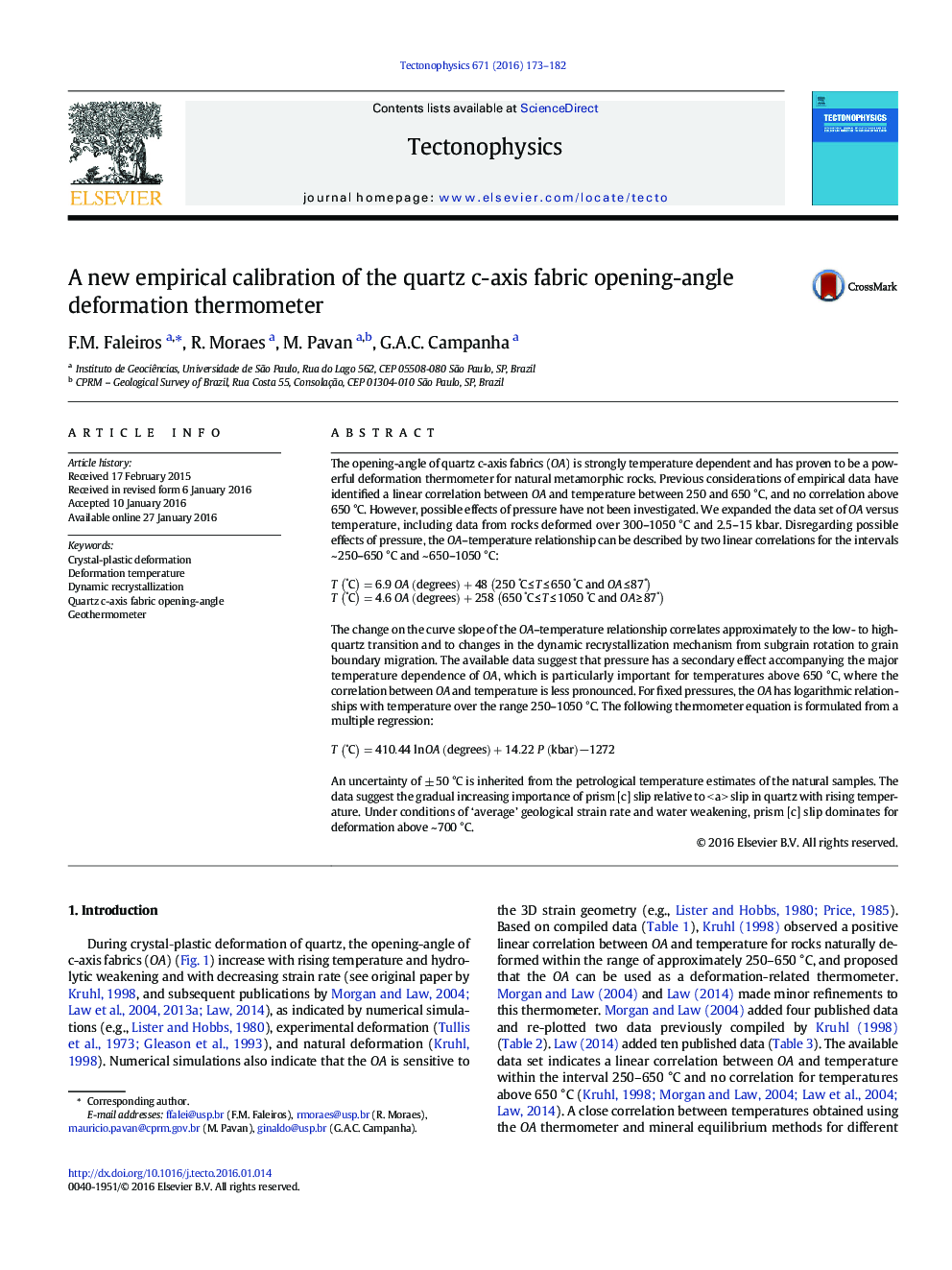| Article ID | Journal | Published Year | Pages | File Type |
|---|---|---|---|---|
| 4691332 | Tectonophysics | 2016 | 10 Pages |
•We improved the quartz c-axis fabric opening-angle deformation thermometer.•We extended the thermometer to higher deformation temperatures (up to 1050 °C).•The opening-angle has logarithmic relationships with temperature for fixed pressures.•Pressure has a secondary effect on the opening-angle over the range of 2.5–15 kbar.•The data yielded the fit: T (°C) = 410.44 ln (opening-angle) + 14.22 P (kbar) − 1272.
The opening-angle of quartz c-axis fabrics (OA) is strongly temperature dependent and has proven to be a powerful deformation thermometer for natural metamorphic rocks. Previous considerations of empirical data have identified a linear correlation between OA and temperature between 250 and 650 °C, and no correlation above 650 °C. However, possible effects of pressure have not been investigated. We expanded the data set of OA versus temperature, including data from rocks deformed over 300–1050 °C and 2.5–15 kbar. Disregarding possible effects of pressure, the OA–temperature relationship can be described by two linear correlations for the intervals ~ 250–650 °C and ~ 650–1050 °C:T°C=6.9OAdegrees+48250°C≤T≤650°CandOA≤87°T°C=4.6OAdegrees+258650°C≤T≤1050°CandOA≥87°The change on the curve slope of the OA–temperature relationship correlates approximately to the low- to high-quartz transition and to changes in the dynamic recrystallization mechanism from subgrain rotation to grain boundary migration. The available data suggest that pressure has a secondary effect accompanying the major temperature dependence of OA, which is particularly important for temperatures above 650 °C, where the correlation between OA and temperature is less pronounced. For fixed pressures, the OA has logarithmic relationships with temperature over the range 250–1050 °C. The following thermometer equation is formulated from a multiple regression:T°C=410.44lnOAdegrees+14.22Pkbar−1272An uncertainty of ± 50 °C is inherited from the petrological temperature estimates of the natural samples. The data suggest the gradual increasing importance of prism [c] slip relative to < a > slip in quartz with rising temperature. Under conditions of ‘average’ geological strain rate and water weakening, prism [c] slip dominates for deformation above ~ 700 °C.
